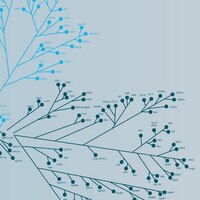Rho-associated kinase of chicken gizzard smooth muscle.
Feng, J, et al.
J. Biol. Chem., 274: 3744-52 (1999)
1999
Show Abstract
Rho-associated kinase (Rho-kinase) from chicken gizzard smooth muscle was purified to apparent homogeneity (160 kDa on SDS-polyacrylamide gel electrophoresis) and identified as the ROKalpha isoform. Several substrates were phosphorylated. Rates with myosin phosphatase target subunit 1 (MYPT1), myosin, and the 20-kDa myosin light chain were higher than other substrates. Thiophosphorylation of MYPT1 inhibited myosin phosphatase activity. Phosphorylation of myosin at serine 19 increased actin-activated Mg+-ATPase activity, i.e. similar to myosin light chain kinase. Myosin phosphorylation was increased at higher ionic strengths, possibly by formation of 6 S myosin. Phosphorylation of the isolated light chain and myosin phosphatase was decreased by increasing ionic strength. Rho-kinase was stimulated 1.5-2-fold by guanosine 5'-O-3-(thio)triphosphate.RhoA, whereas limited tryptic hydrolysis caused a 5-6-fold activation, independent of RhoA. Several kinase inhibitors were screened and most effective were Y-27632, staurosporine, and H-89. Several lipids caused slight activation of Rho-kinase, but arachidonic acid (30-50 microM) induced a 5-6-fold activation, independent of RhoA. These results suggest that Rho-kinase of smooth muscle may be involved in the contractile process via phosphorylation of MYPT1 and myosin. Activation by arachidonic acid presents a possible regulatory mechanism for Rho-kinase. | 9920927
 |
Transformation mediated by RhoA requires activity of ROCK kinases.
Sahai, E, et al.
Curr. Biol., 9: 136-45 (1999)
1999
Show Abstract
BACKGROUND: The Ras-related GTPase RhoA controls signalling processes required for cytoskeletal reorganisation, transcriptional regulation, and transformation. The ability of RhoA mutants to transform cells correlates not with transcription but with their ability to bind ROCK-I, an effector kinase involved in cytoskeletal reorganisation. We used a recently developed specific ROCK inhibitor, Y-27632, and ROCK truncation mutants to investigate the role of ROCK kinases in transcriptional activation and transformation. RESULTS: In NIH3T3 cells, Y-27632 did not prevent the activation of serum response factor, transcription of c-fos or cell cycle re-entry following serum stimulation. Repeated treatment of NIH3T3 cells with Y-27632, however, substantially disrupted their actin fibre network but did not affect their growth rate. Y-27632 blocked focus formation by RhoA and its guanine-nucleotide exchange factors Dbl and mNET1. It did not affect the growth rate of cells transformed by Dbl and mNET1, but restored normal growth control at confluence and prevented their growth in soft agar. Y-27632 also significantly inhibited focus formation by Ras, but had no effect on the establishment or maintenance of transformation by Src. Furthermore, it significantly inhibited anchorage-independent growth of two out of four colorectal tumour cell lines. Consistent with these data, a truncated ROCK derivative exhibited weak ability to cooperate with activated Raf in focus formation assays. CONCLUSIONS: ROCK signalling is required for both the establishment and maintenance of transformation by constitutive activation of RhoA, and contributes to the Ras-transformed phenotype. These observations provide a potential explanation for the requirement for Rho in Ras-mediated transformation. Moreover, the inhibition of ROCK kinases may be of therapeutic use. | 10021386
 |


















